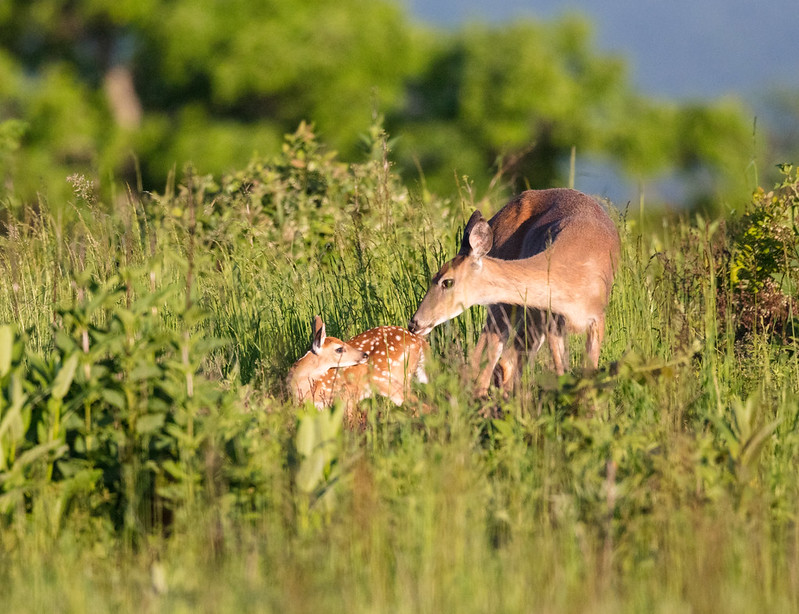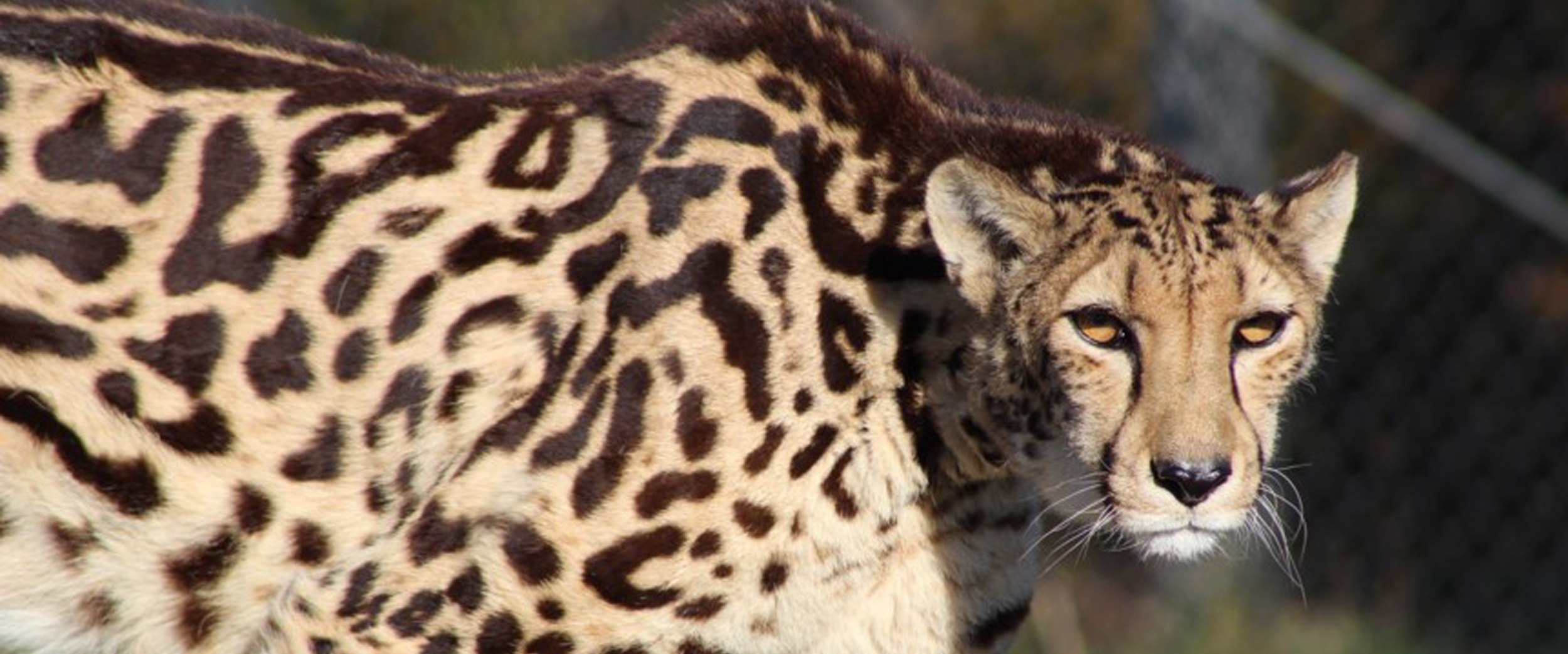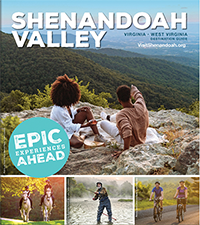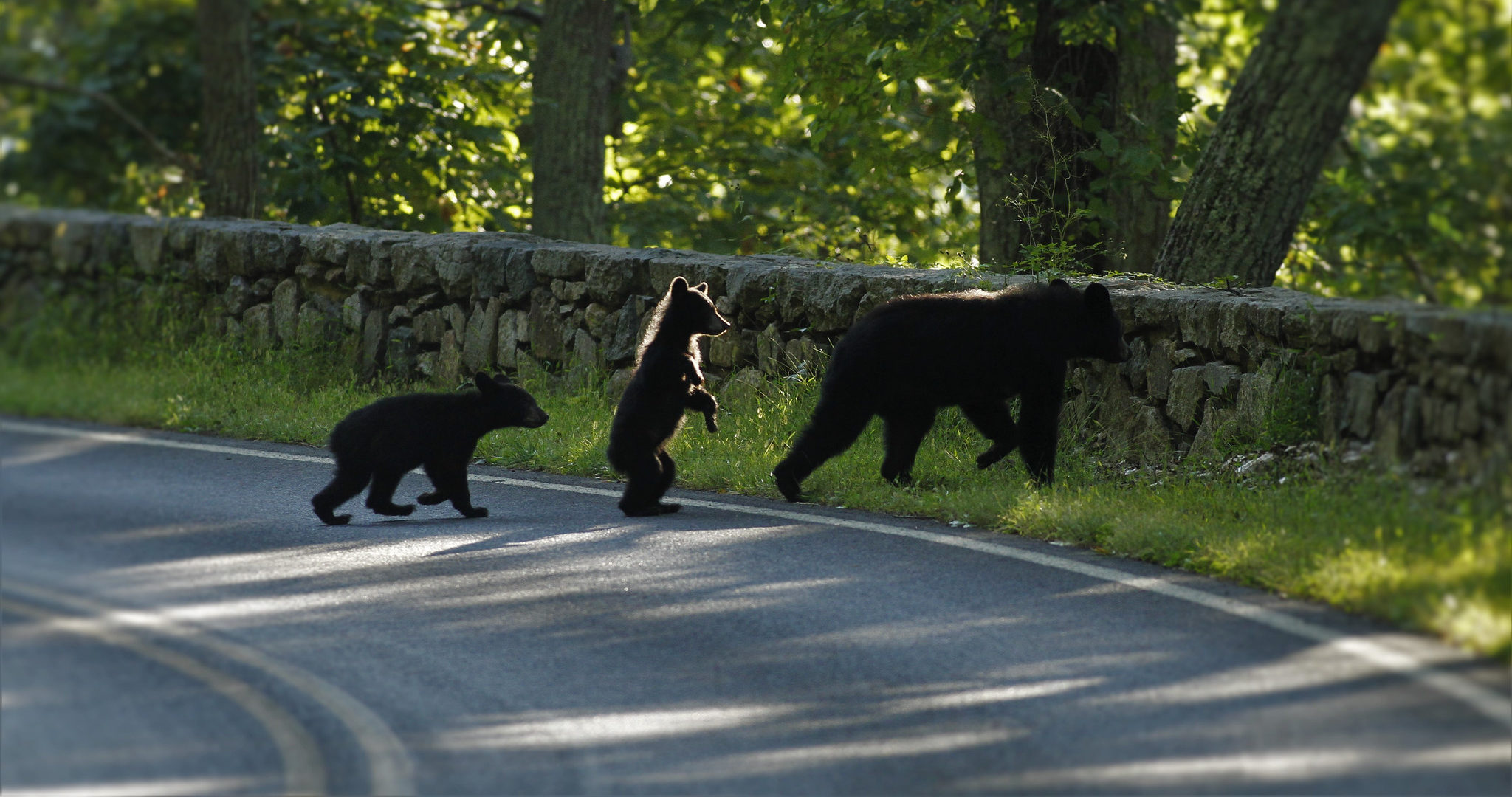In recognition of World Wildlife Day on March 3, we give you an ode to Shenandoah Valley critters and tips on the best places to find them.
From perches high they gracefully swoop down:
Red-tailed, Sharp-shinned, and Cooper’s alike.
Today’s take are trout: rainbow and brown.
Delicious; not likely to share a bite.
From their dens black bears begin to arise
Answering the call of spring’s warming rays.
Unsteady and anxious cubs become wise
Of mama’s hunger-conquering ways.
Scratching her way through forest floor finds,
A wild turkey hen contentedly clucks and purrs.
Undoubtedly, spring mating is top-of-mind
As a proud gobbler replies, beckoning her.
-Casey Higgins
Great Places to See Wildlife
In their natural habitat, wildlife can be unpredictable in schedule. Sure, we know the range of whitetail deer and they often have favorite places to frequent. However, there’s never a guarantee of where or when an animal sighting will take your breath away.
The awe of seeing a bear on Skyline Drive never goes away, and Shenandoah National Park is a prime place to encounter one. Remember to never approach a bear, feed it, or interact with it at all, really. Admire from a distance and allow it to remain wild. It will save your life and the bear’s life.
Deer are all over rural Virginia and can often be seen meandering around town and city boundaries. They especially enjoy the new blooms of spring and will gladly take the top off a tulip in any garden within their reach.

Whitetail Deer and fawn in Shenandoah National Park.
Migratory birds have stopover points, of which Shenandoah National Park is one. Raptors are the main attraction each fall during the Rockfish Gap Hawk Watch, but that’s not the only time to see them. Hawks are happy perched high with a wide visual range. Barren trees are perfect for eyeing open grasslands in search of field mice. Big Meadows in Shenandoah National Park is such a place.
The Bald Eagle is not as rare as it once was, and the Shenandoah Valley has a few that seem to call it home. Rural rivers and creeks teeming with trout are popular hot spots for the American icon. Though no longer endangered, they are still federally protected. Seeing one in the wild is an awesome treat. Consider the Maury River, James River, South River, and Shenandoah River for potential sightings.
Perhaps the best place to venture out in hopes of seeing something – anything – is one of the wildlife management areas we’ve detailed here. National forests, wilderness areas … they’re the hottest of hot spots!
Guaranteed Wildlife Sightings
Virginia Safari Park in Natural Bridge brings plethora animal engagement opportunities to anyone who would seek it out. Drive your own car through the 180-acre park or hop aboard a tractor-pulled wagon for a narrated tour. A bucket of animal feed will secure a real up close and personal experience with emu, Watusi, llamas, ostrich, and much more. More intimate, exclusive options are also available, like visiting the endangered white rhinos or meeting the ultra-rare king cheetahs, of which the Virginia Safari Park is home to two and the only place you can see king cheetah in the United States!
Virginia Safari Park opens March 4 for the season.
Fun Fact: King cheetah is not a separate African cheetah species, but rather, they are African cheetah who bare bold, distinctive markings due to a recessive gene. They’re easy to differentiate due to their wide, solid black stripes down their backs.

King Cheetah at Virginia Safari Park
The Wildlife Center of Virginia in Waynesboro is a rehabilitation center for wild animals in need of help. Some animals are not always able to go back into the wild, therefore the center is also a home to wildlife, like Buddy the Bald Eagle and Maggie the Peregrine Falcon. At this time, tours of the center are not available but the Critter Cams are up and running!
If you have an interest in the wellbeing of injured wildlife in the Shenandoah Valley, feel free to follow their Current Patients for intake, treatment, and release reports.
In Luray, the Luray Zoo – a true rescue zoo – is open to visitors daily as of March 1. They are home to retired animal ambassadors, “unwanted pets, confiscations, and … abused animals.” In addition, the Luray Zoo is home to one of the biggest collections of venomous snakes on the East Coast.
Shenandoah University has noted a nice rookery of great blue heron on their Shenandoah River Campus at Cool Spring Battlefield in Bluemont, as well as many wildlife already mentioned in this article. It’s also a fantastic place to appreciate native Virginia Bluebells this spring.
We’d love to see what YOU see while you’re out and about! Tag us on Instagram or share a pic to our Facebook page.
Header image courtesy of Shenandoah National Park, National Park Service





